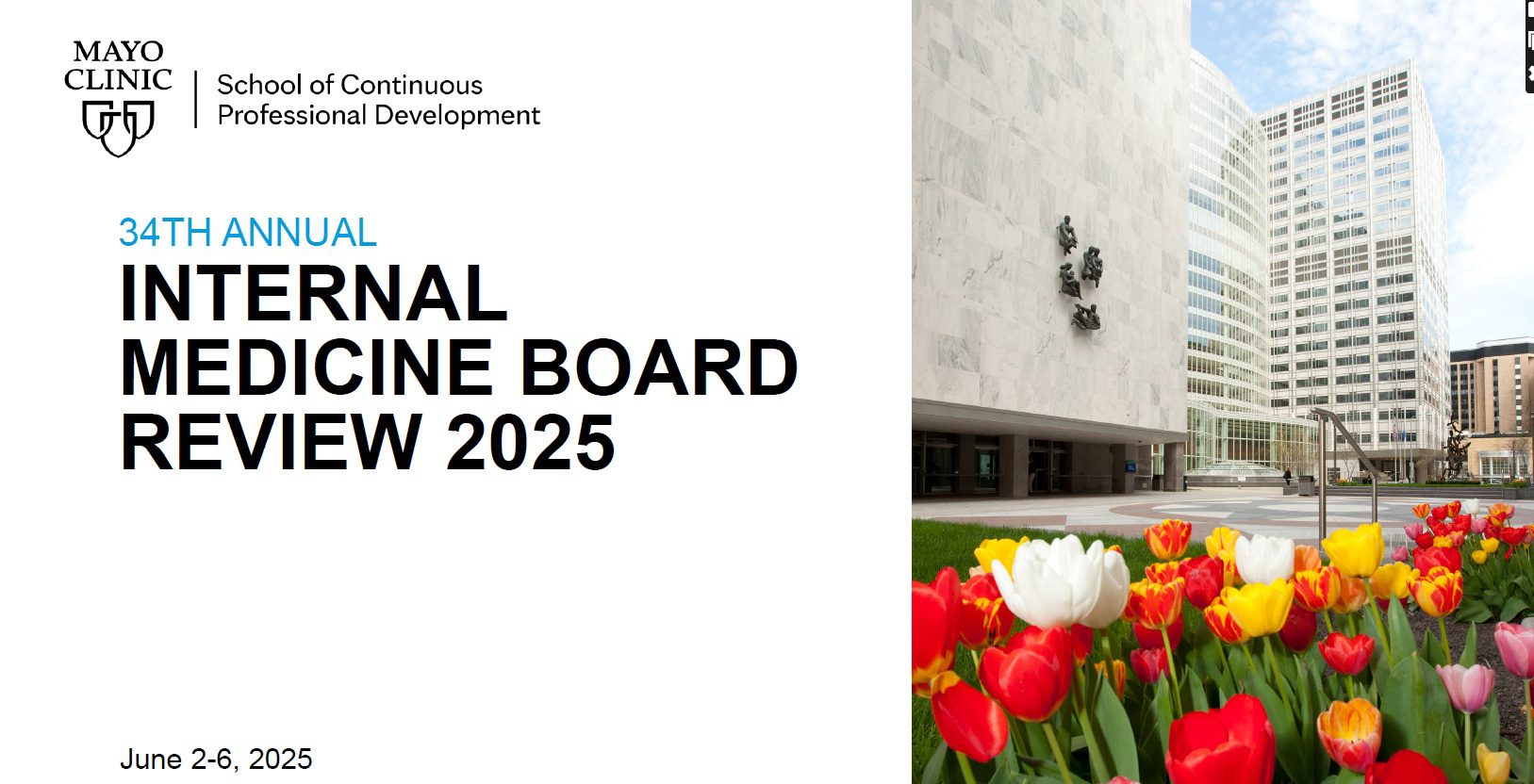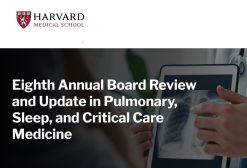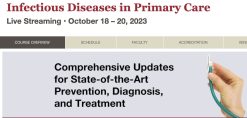Mayo Clinic 34th Annual Internal Medicine Board Review 2025 (Only Qbank)
$40,00
This Product is shared via google drive download link, So please share your correct Gmail id while placing the order .Please note that there are no CME points or certificate associated with this course Samples for Courses Can be found here : Free Samples Here!
Mayo Clinic 34th Annual Internal Medicine Board Review 2025 (Only Qbank)
Mayo 34th IMBR Quiz
This is ONly Qbank : 154 Questions with answers and explanation in PDF format ..
Target Audience
This course is designed for internal medicine physicians who are:
- Intending to obtain a thorough review in internal medicine
- Completing their maintenance of certification knowledge modules
- Taking the initial ABIM certification examination
- Taking the ABIM maintenance of certification examination
Learning Objectives
Upon completion of this activity, participants should be able to:
Identify topics and content areas for personal growth to tailor self-study
- Recall clinical presentation of conditions critical to the practice of internal medicine and its subspecialties
- Select next best steps in the evaluation, diagnosis and management of common and life-threatening conditions
- Apply evidence-based medicine principles to answer statistical and clinical questions
- Implement best current evidence-based practices into patient care
34th Annual Internal Medicine Board Review
Hilton Rochester Mayo Clinic Area Hotel
Sample Quetsion
Question 95:
A 42-year-old woman with long history of obesity (BMI 30 kg/m²) presents to clinic for a follow-up on abnormal uterine bleeding. Prior to these episodes, she had heavy menstrual periods lasting 4 days with dysmenorrhea. Pelvic exam during her initial evaluation 6 months ago was normal. Her Pap smear and results of a transvaginal ultrasound were also negative. Her complete blood count, coagulation labs, and thyroid-stimulating hormone levels were normal. Since then, she has had three more episodes of bleeding between periods.
She denies any easy bruising or other bleeding problems. She does not have any other medical problems and does not take any medications.
Which of the following is the most appropriate next step in management of this patient?
a.
Perform an endometrial biopsy
b.
Place a progesterone intrauterine device
c.
Start a course of naproxen
d.
Recommend uterine artery embolization
Answer:
a.
Perform an endometrial biopsy
Explanation: Abnormal uterine bleeding (AUB) is defined as uterine bleeding in the absence of pregnancy that is abnormal in regularity, volume, frequency, or duration. Causes of AUB are now classified as structural (polyp, adenomyosis, leiomyoma, malignancy and hyperplasia) or non-structural related abnormalities (coagulopathy, ovulatory dysfunction, endometrial, iatrogenic, and not otherwise classified).
The patient should be evaluated next with an endometrial biopsy given persistent AUB and obesity.
Endometrial biopsy should be the first line test in patients 45 years or
older due to the increasing risk of endometrial cancer.
In those younger than 45 years, endometrial biopsy is also recommended if there is a history of exposure to unopposed estrogen (polycystic ovarian syndrome, obesity), those who fail medical management and have persistent AUB, or those with endometrial abnormalities on ultrasound. Uterine artery embolization is typically utilized for heavy bleeding associated with uterine fibroids. Given the normal pelvic exam and ultrasound, fibroids are likely not the cause of the patient’s presentation. Placement of a progesterone intrauterine device and NSAIDs will likely both be effective for decreasing bleeding in non-anatomic causes of AUB. However, endometrial biopsy should be performed to rule out AUB related structural abnormalities first.
Matthews ML. Abnormal uterine bleeding in reproductive-aged women. Obstet Gynecol Clin North Am. 2015;42(1):103-115
Related products
INTERNAL MEDICINE
Oakstone Intensive Update with Board Review in Geriatric and Palliative Medicine 2022
FAMILY MEDICINE
ENDOCRINE / NUTRITION
ENDOCRINE / NUTRITION
Intensive Update with Board Review in Geriatric & Palliative Medicine 2023
CRITICAL CARE / EMERGENCY MEDICINE











